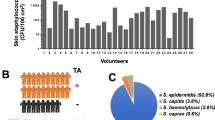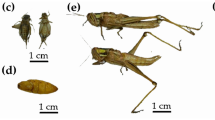Abstract
THE demonstration that opium alkaloids of the plant kingdom mediate their effects on animals through specific receptors1 led to the discovery that endogenous molecules with opiate activity exist widely in animals2, including man. These studies raised the possibility that other potent pharmacological agents derived from plant sources might have active analogues in higher species. Thus, cardiac glycosides are found widely in the plant kingdom3; structurally similar compounds in the animal kingdom are known to exist only in the poison glands of certain toads3. The dried skins of Bufonid toads have been used in Chinese folk medicine for the treatment of cardiac failure4. Further, these poorly characterised medicinal preparations (Ch'an Su) were shown in the 1920s to contain ouabain-like compounds (bufotoxins) by chemical analysis5. However, although bufotoxins were shown to be a major constituent of the poison glands of Bufo marinus3 the possibility that similar compounds might also serve a physiological role apart from that of a defensive toxin was apparently not considered. More recently, two major observations make the consideration of such a physiological role seem reasonable. First, amphibian skin, which is a major organ for regulation of sodium and water homeostasis in these species6, has been shown to be rich in (Na+ + K+)-ATPase, the molecular mediator of sodium transport across the skin8. In fact, with toad bladder, amphibian skin has been widely used as a model of transepithelial ion transport in higher animals. Second, the pharmacological receptor for cardiac glycosides is now believed to be the (Na+ + K+)-ATPase9,10, glycoside binding to this enzyme resulting in inhibition of both ATPase activity11,12 and associated ion transport13,14. This glycoside–enzyme interaction is considered to be the basis for the cardiac stimulating activity10 for which glycosides such as ouabain and digoxin are used in the therapy of cardiac disorders. We report here that extracts of the skin of three different species of toad each contain high concentrations of a substance with all the functional properties of cardiac glycosides. The widespread existence of ouabain-like activity in an organ rich in physiologically important (Na+ + K+)-ATPase suggests a possible role for these endogenous compounds in the regulation of transepithelial ion transport.
This is a preview of subscription content, access via your institution
Access options
Subscribe to this journal
Receive 51 print issues and online access
$199.00 per year
only $3.90 per issue
Buy this article
- Purchase on Springer Link
- Instant access to full article PDF
Prices may be subject to local taxes which are calculated during checkout
Similar content being viewed by others
References
Pert, C. B. & Snyder, S. H. Science 179, 1011–1014 (1973).
Hughes, J. et al. Nature 258, 577–579 (1975).
Fieser, L. F. & Fieser, M. in Steroids (eds Fieser, L. F. & Fieser, M.) 727–809 (Reinhold, London, 1959).
Moe, G. K., & Farah, A. E. in The Pharmacological Basis of Therapeutics (eds Goodman, L. S. & Gilman, A. E.,) 677–708 (Macmillan, London, 1970).
Wieland, H. & Alles, R. Ber. dt. chem. Ges. 55, 1789–1799 (1922): Wieland, H. & Behringer, H. Justus Liebigs Annln Chem. 549, 209–223 (1941).
Shoemaker, V. H. & Nagy, K. A. A. Rev. Physiol. 39, 449–471 (1977).
Koefoed-Johnsen, V. Acta physiol. scand. 42, 745–756 (1957).
Bonting, S. L. & Caravaggio, L. L. Archs Biochem. Biophys. 101, 37–45 (1963).
Matsui, H. & Schwartz, A. Biochim. biophys. Acta 151, 655–665 (1968).
Akera, T. Science 198, 569–574 (1977).
Akera, T. Biochim. biophys. Acta 249, 53–60 (1973).
Allen, J. C., Martines-Maldonado, M., Eknoyan, G., Suki, W. N. & Schwartz, A. Biochem. Pharmac. 20, 73–82 (1971).
Schatzman, H. Helv. physiol. pharmac. Acta 11, 346–360 (1953).
Glynn, I. M. Pharmac. Rev. 16, 381–411 (1964).
Gardner, J. D. & Conlon, T. P. J. gen. Physiol. 60, 609–629 (1972).
Albers, R. W., Fahn, S. & Koval, G. J. Proc. natn. Acad. Sci. U.S.A. 50, 474–481 (1963).
Shimada, K., Fujii, Y., Yamashita, E., Niizaki, Y. & Sato, Y. Chem. Pharm. Bull. (Tokyo) 25, 714–730 (1977).
Author information
Authors and Affiliations
Rights and permissions
About this article
Cite this article
FLIER, J. Ouabain-like activity in toad skin and its implications for endogenous regulation of ion transport. Nature 274, 285–286 (1978). https://doi.org/10.1038/274285a0
Received:
Accepted:
Published:
Issue Date:
DOI: https://doi.org/10.1038/274285a0
This article is cited by
-
Interaction of hypothalamic Na,K-ATPase inhibitor with isolated human peripheral blood mononuclear cells
Bioscience Reports (1994)
-
In search of synaptosomal Na+, K+-ATPase regulators
Molecular Neurobiology (1992)
-
Endogenous digitalis-like substance in plasma of volume-expanded dogs
Nature (1980)
-
Endogenous digitalis-like activity in the plasma of the toad Bufo marinus
Nature (1979)
-
Vanadate blocks cyclic AMP-induced Stimulation of sodium and water transport in amphibian epithelia
Nature (1979)
Comments
By submitting a comment you agree to abide by our Terms and Community Guidelines. If you find something abusive or that does not comply with our terms or guidelines please flag it as inappropriate.



